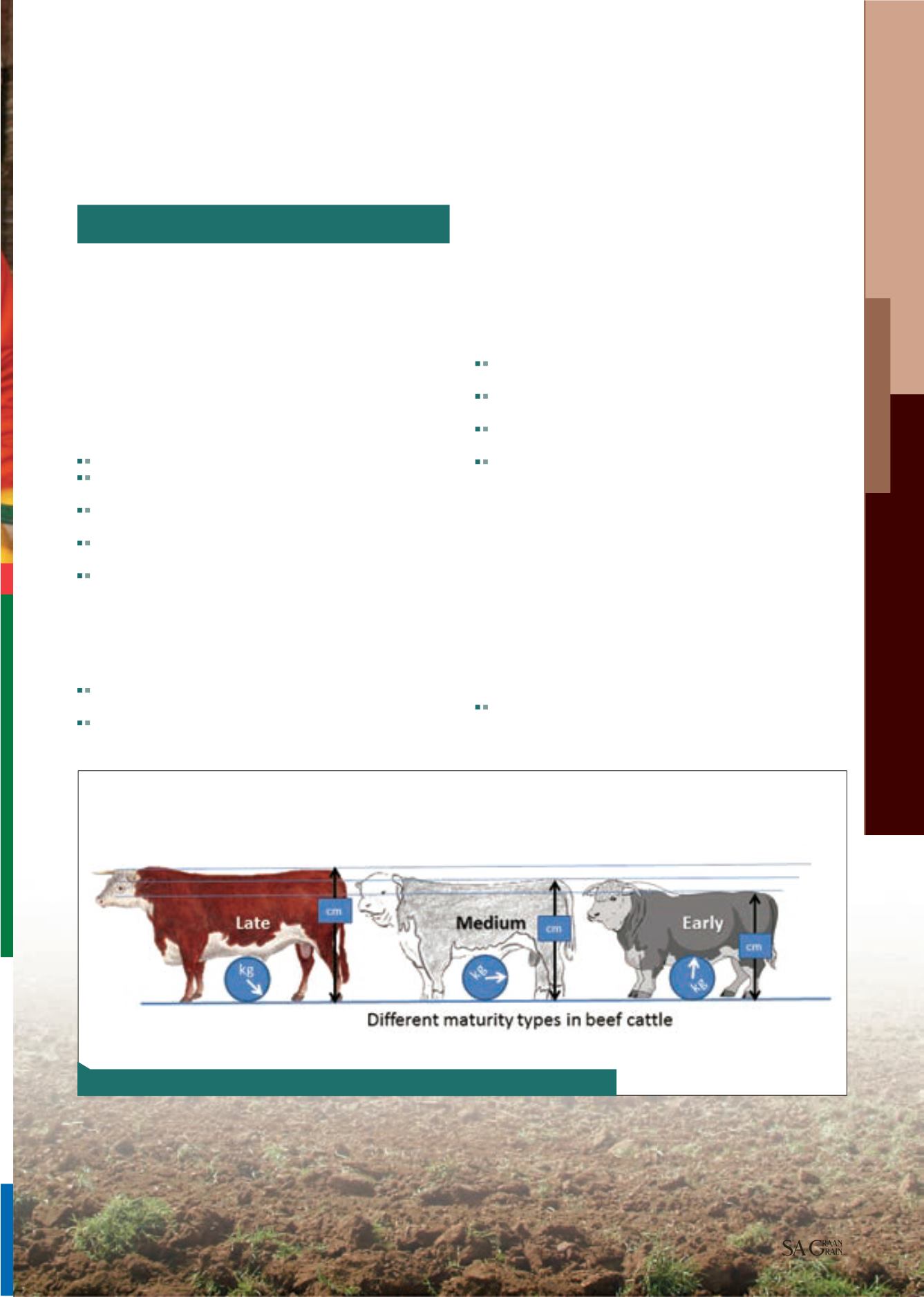
Making sense out of maturity
types in beef cattle
97
October 2013
Focus on livestock
JAPIE VAN DER WESTHUIZEN, SA STUD BOOK AND ANIMAL
IMPROVEMENT ASSOCIATION
Due to long term selection and possibly evolutionary changes to adapt to
different environments and production systems, beef cattle breeds differ in
mature size and therefore can also be classified as different maturity types.
Maturity types basically refer to the differences in physiological ages at
the same chronological age (or differences in chronological ages at the
same physiological age). In practical terms, that means later maturing
animals will be physiologically “younger” at the same age compared to
earlier maturing animals.
These differences have a large impact on differences among cattle in
terms of:
Growth rate, as measured at a specific age interval.
Gain efficiency (kilogram feed intake in relation to kilogram live body
gain).
Dressing percentage and also subsequent lean muscle yield at a spe-
cific live weight (range).
Carcass class, especially in terms of fat content at a specific age or
carcass weight range.
Time and feed needed for a specific degree of finish (millimetres sub-
cutaneous fat).
Figure 1
is an attempt to illustrate three possible maturity types within
a breed.
From Figure 1, the following can be seen:
Later maturing cattle will generally be heavier at mature age than
earlier maturing cattle.
Rump (or shoulder) height will be higher in later maturing cattle. This
difference can be observed at a fairly young age by comparing differ-
ences in cannon bone length (as young as days after birth) or using
rump height measurements prior to puberty. This fact can also be
used very eloquently in identifying maturity type early in life, even
for genetic selection purposes.
These differences were already described by Brungardt (Brungardt, VH.
Undated,
Efficiency
and profit differences of Angus
,
Charolais and Here-
ford cattle varying in size and growth
, as quoted by Berg, R.T. and But-
terfield, R.M. 1976), where he stated:
At the same weight, cattle with fast weight gains are more efficient
than smaller, slower gaining cattle.
At the same grade, cattle with rapid weight gain are almost as ef-
ficient as smaller cattle.
Faster gaining cattle are approximately as efficient at their heavier
weights as smaller cattle at their lighter weights.
Cattle selected for growth reach choice carcass grade or a composi-
tional constant end point at significantly heavier weights. Thus evalu-
ating cattle of different breeds and growth patterns at weight end
points has less practical significance than composition or grade end
points.
His last statement is especially significant when evaluating the value of
feeding cattle differing in maturity type. Effectively, this means that the
end-purpose of finishing cattle will determine the type of cattle consid-
ered due to differing feeding regimes, markets and also taking the ratio
of feed and carcass price into consideration.
To clarify,
Figure 2
and
Figure 3
can serve as illustration.
Figures 2 and 3 illustrate a few important points:
The rate of growth for bone, muscle and fat differ with age. The rate
of reaching maturity also differs and the order is: Bone, followed by
muscle and lastly, fat.
Continued on page 98
Figure 1: Illustration of the differences among three maturity types beef cattle of the same breed at maturity.


